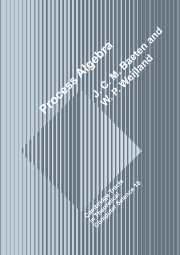1 - Preliminaries
Published online by Cambridge University Press: 08 January 2010
Summary
INTRODUCTION
This book provides a systematic introduction to process algebra, suitable for teaching purposes. By the term process algebra we mean the study of concurrent communicating processes in an algebraic framework, following the approach of J.A. Bergstra and J.W. Klop (see section 8.1). In the present book we treat concurrency theory (the theory of concurrent communicating processes) in an axiomatic way, just as for instance the study of mathematical objects as groups or fields starts with an axiomatization of the intended objects. This axiomatic method is algebraic in the sense that we consider structures (also called “process algebras”) as models of some set of (mostly) equational axioms. These structures are equipped with several operators, and so we use the term algebra in the sense of model theory. R. Milner, with his Calculus of Communicating Systems (CCS), is generally considered to be the initiator of the field of process algebra. CCS forms the basis for most of the axiom systems presented below.
There is ample motivation for such an axiomatic-algebraic approach to concurrency theory. The main reason is that there is not one definitive notion of process. There is a staggering amount of properties which one may or may not attribute to processes, there are dozens of views (semantics) which one may have on processes, and there are infinitely many models of processes. So an attempt to organize this field of process theories leads very naturally and almost unavoidably to an axiomatic methodology. A curious consequence is that one has to answer the question “What is a process?” with the seemingly circular answer “A process is something that obeys a certain set of axioms … for processes”.
Information
- Type
- Chapter
- Information
- Process Algebra , pp. 1 - 14Publisher: Cambridge University PressPrint publication year: 1990
